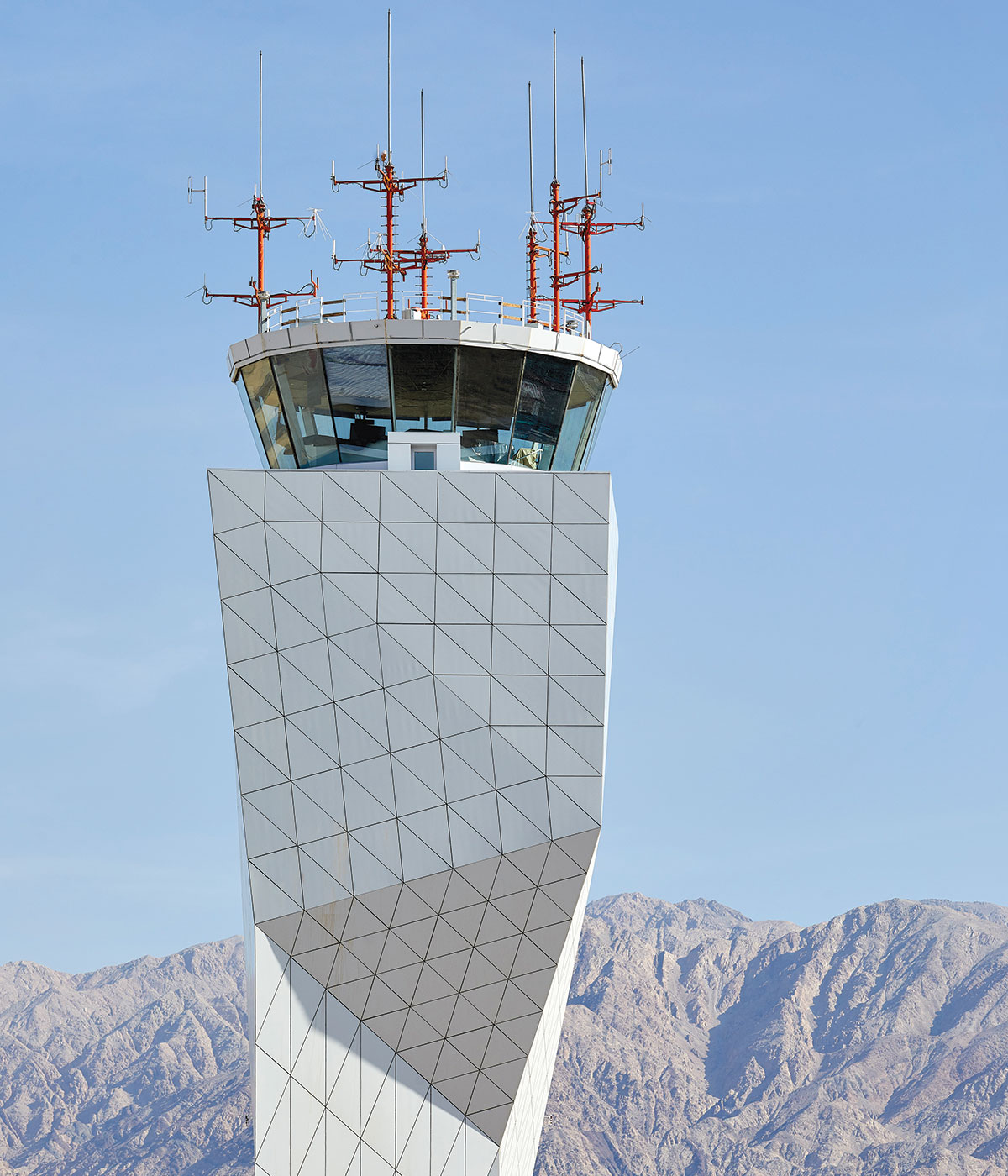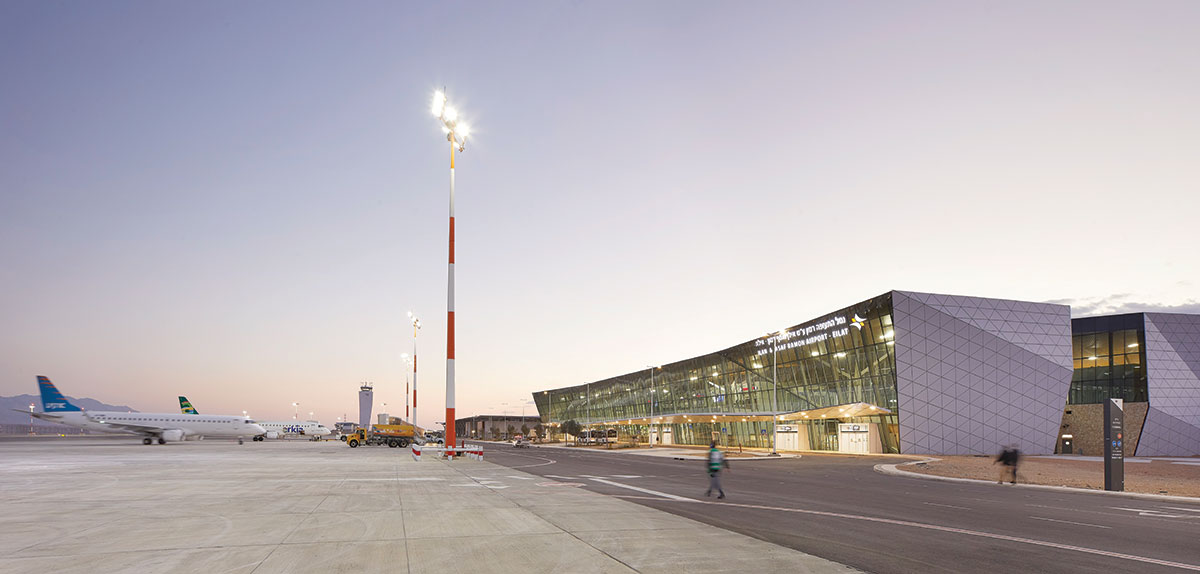
Fact File
Client: Israel Airports Authority (IAA)
Design & Planning Management: Amir Mann - Moshe Zur - Ami Shinar - Orna Zur Architects
Design Manager: Ar. Amir Mann
Construction Management: Gadish-Baran Partnership
Construction Manager: Eng. Ron Havatzelet
Aviation Consultant: ARUP London with Amir Mann-Ami Shinar Architects and Planners
Engineering: Over 45 local Israeli engineering firms
Photo Credit: Hufton + Crow
Located in Timna, Israel’s newest airport spread across 1,250 acres is a minimalist and futuristic design, unified under a unique holistic design language that frames the stunning scenery of the Negev Desert mountain-scape. It is set to become a gamechanger for local and international tourism to Israel, Jordan and Egypt’s Sinai Desert.
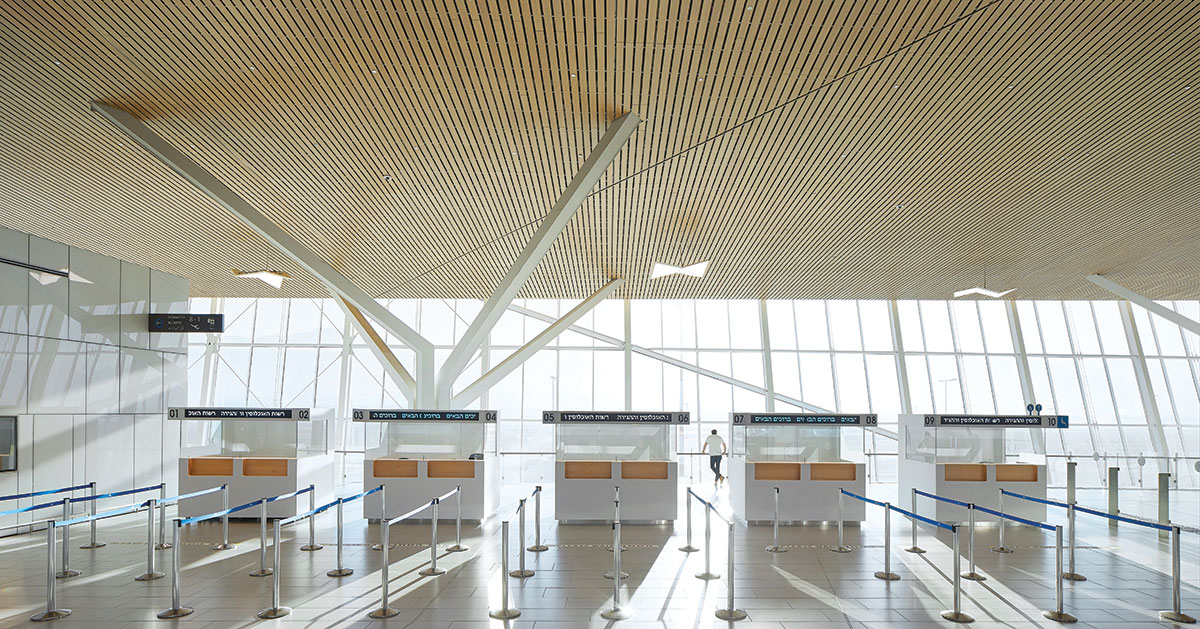
The airport, a greenfield project, was fully constructed and operational within budget, and funded for less than half of similar projects worldwide. It features a 45,000 sqm Passenger Terminal Building and 3,600 m long runway and taxiway, alongside 40 aprons. Two support structures to the north and south measure a combined 36,210 sqm with a 45 m high Air Control Tower. The Airport is expected to host 2.25 million passengers per year, and the figure is estimated to grow to 4.25 million passengers.
The decision of the IAA to appoint the architects as design managers responsible for budget, program, and planning schedule, allowed for the architects to implement the design across the entire airport - from the various buildings to each individual check-in counter, thus unifying the airport on all its parts into a holistic singular entity. This is evident from a general concept of carved geometries, through a limited choice of materials used to clad the forms.
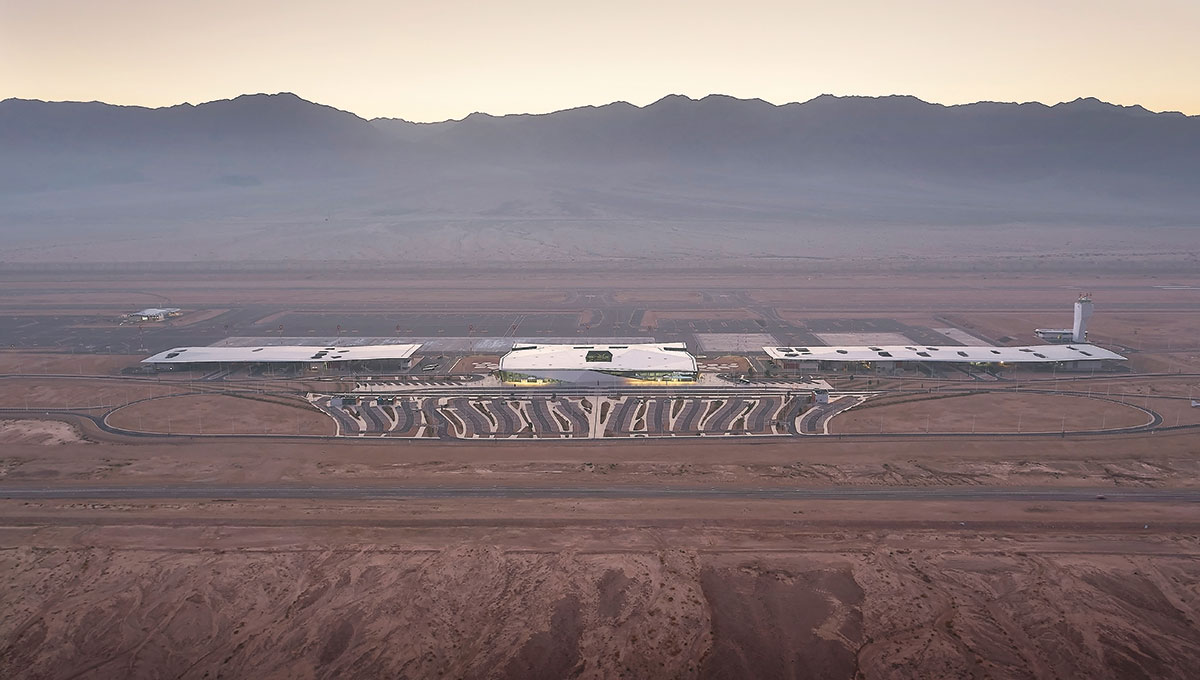
Glass curtain walls introduce the natural desert landscaping into the building and serve as light wells allowing natural light into the depths of the terminal, instead of the commonly used skylights, impossible within such climate conditions. The terminal’s envelope consists of a steel and concrete skeleton structure, clad to the exterior with insulating aluminum triangular panels, continuous from wall to roof to create a single mass. The pristine white panels reflect the light rays and the UV waves and thus help in further reducing the skin’s temperature. Towards the interior, the building’s volume is hollowed out and the envelope is clad in a contrasting bamboo-wood, uniting the ceiling and walls.
The minimalist interior scheme is based on a tightly organized high-ceilinged hall with low-level furniture and pavilions acting as dividers. Its entire infrastructure including baggage handling, security processes, and many other technical operations and systems are all hidden on a lower level. This allows for the roof to be free of any technical equipment as a fifth façade viewed from the airplane window, and for all passenger processes to be efficiently on one single level.
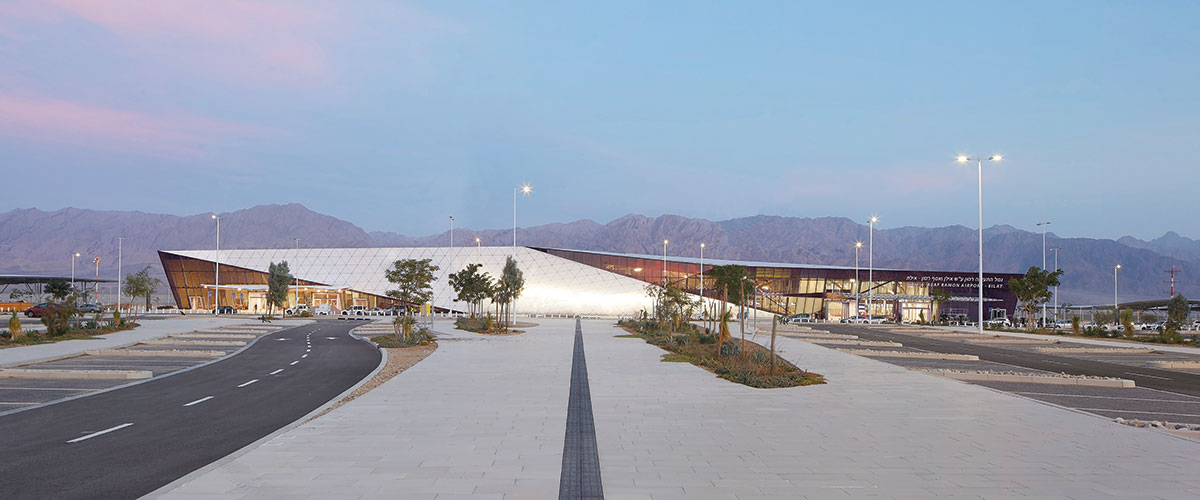
The landscaping made maximum use of existing local materials, and all the sand and rocks excavated at site were used as fillers for construction of the runways, the airplane hardstands and the roads. To this end, a grinding factory was set up to crush the pebbles into bedding materials. The land collected during digging was used to cover the ground upon completion of construction to seamlessly integrate the landscape development with the natural surroundings. In addition, local plant seeds were harvested and preserved at the site, during the years of construction, and finally returned to their original location, to serve as the desert vegetation lining the airport’s landscape.
